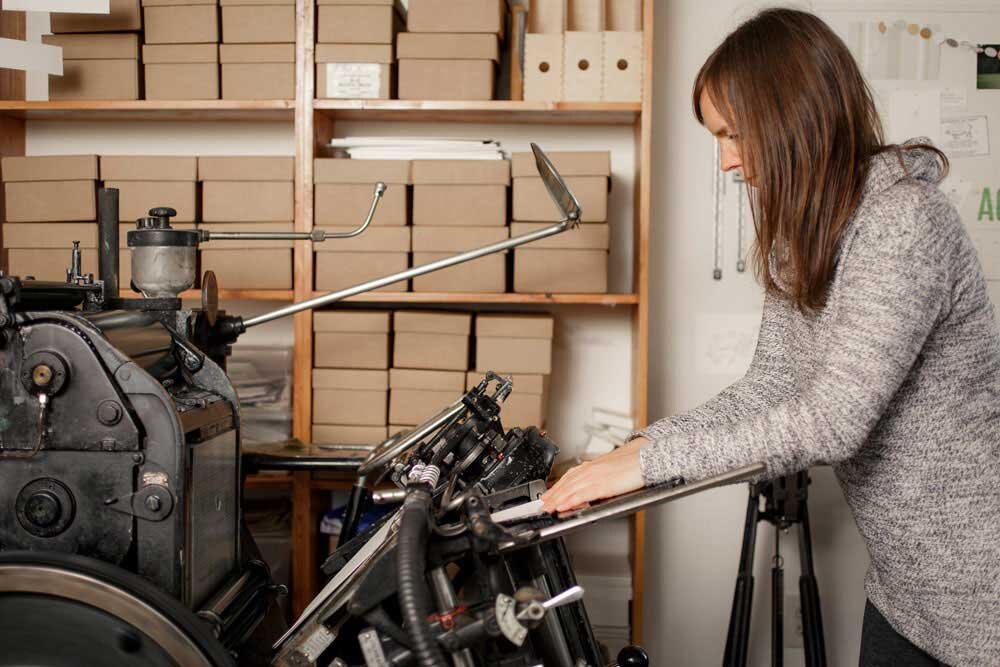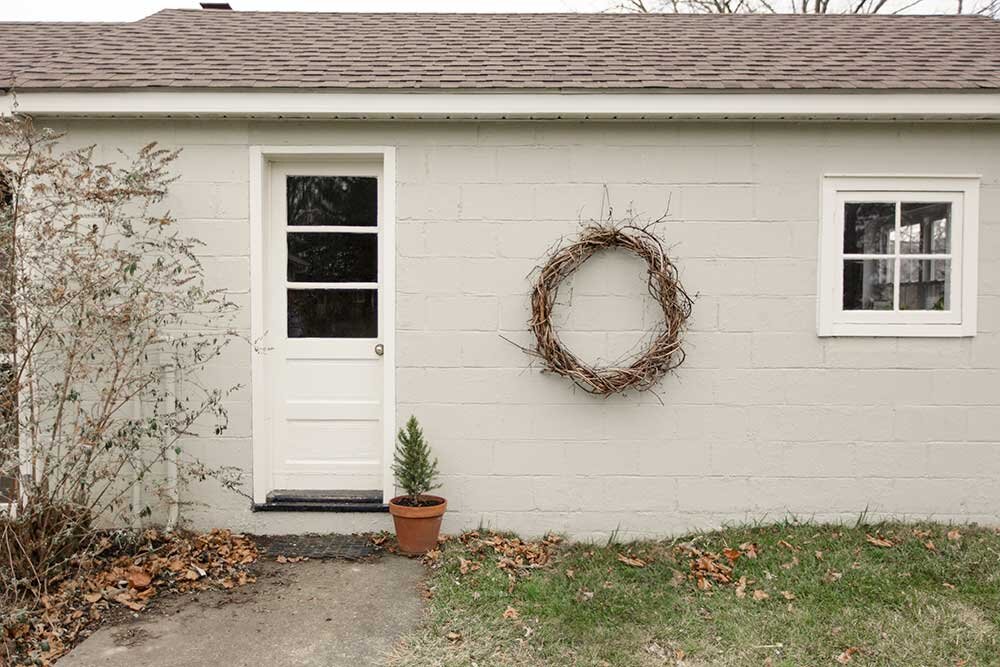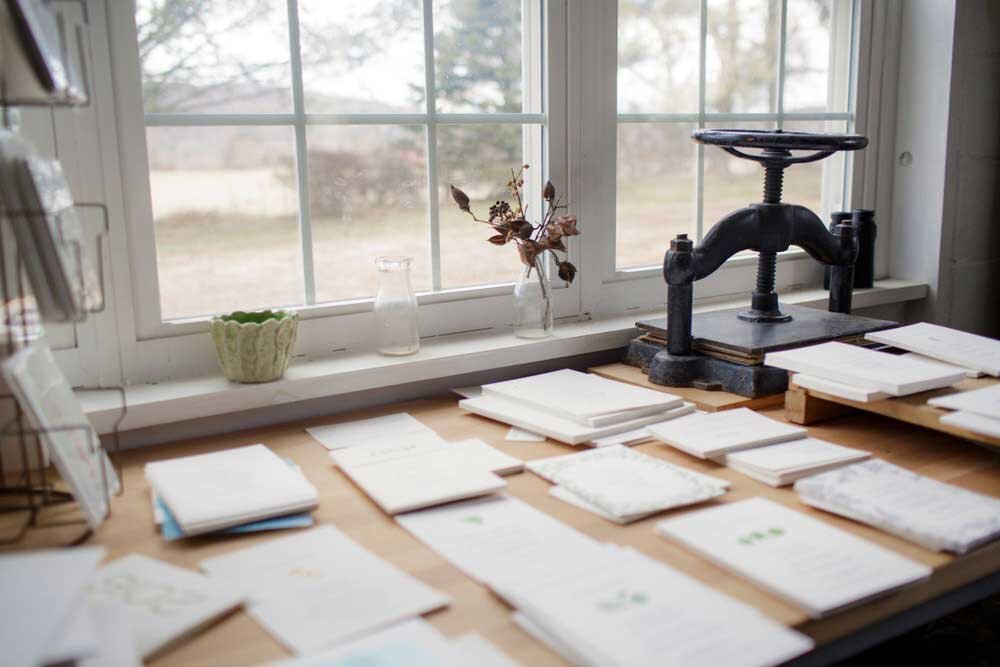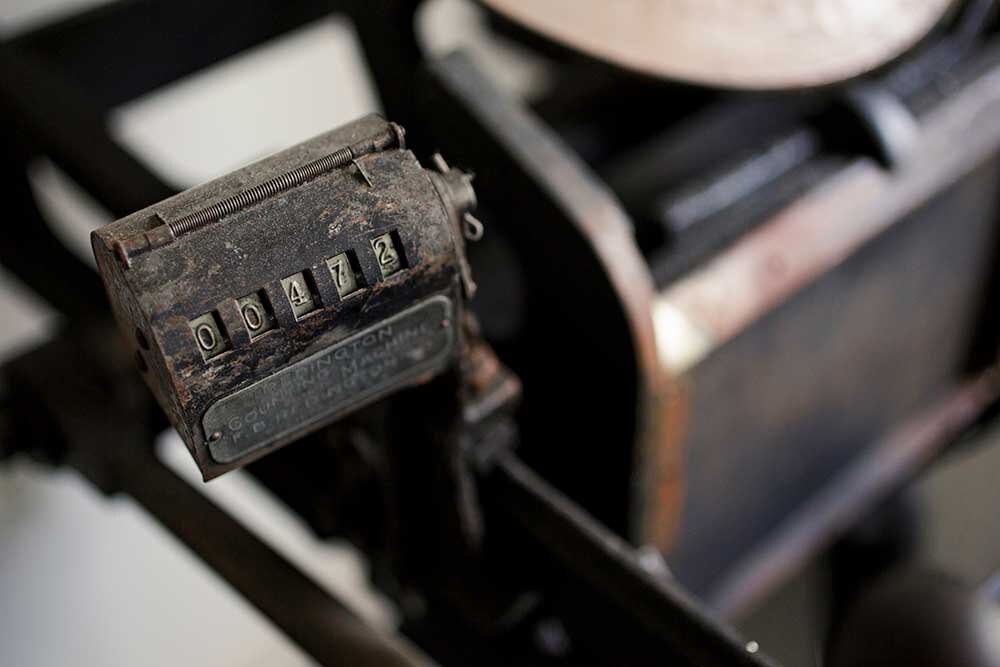What is letterpress?
Letterpress printing is the ‘relief’ printing of text and image using a press with movable type or plates, in which a reversed, raised surface is inked and then pressed into a sheet of paper to obtain an image. Invented by Johannes Gutenberg, it was the usual form of printed text from the mid-15th century until the 19th century and replaced hand-written calligraphy.
If you ever have the opportunity to admire a 15th Century book you will see the enduring and timeless quality of letterpress. Letterpress fell out of favor as more efficient forms of printing were developed, but has recently experienced a renaissance with the renewed interest in craft and handmade objects.
Letterpress machines are impressive: heavy and substantial with thousands of mechanical parts. They come alive with a cacophony of clinking, clunking, and whooshing. The star of our studio is our beloved Heidelberg Windmill press, which inks plates and then presses against soft, cotton paper; not just printing graphics but also leaving shaped impressions on paper. Letters and images look crisp and sharp on the page, and as you run your fingers over the surface you can feel the recessed texture of the type. So in both look and feel letterpress is distinctive. It is an enduring art form that produces beautiful, elegant and unique pieces.
Small Footprint
Great care is taken to keep the studio carbon footprint minimal. Year by year, the commitment to eco-friendly methods of production is strengthening. Currently with platemaker, guillotine cutter, presses and supporting equipment fully on site, emissions from outsourcing any phase of production is zero. In-house paper stock is made from 100% recycled, acid-free rag cotton. This stock is tree-free.




